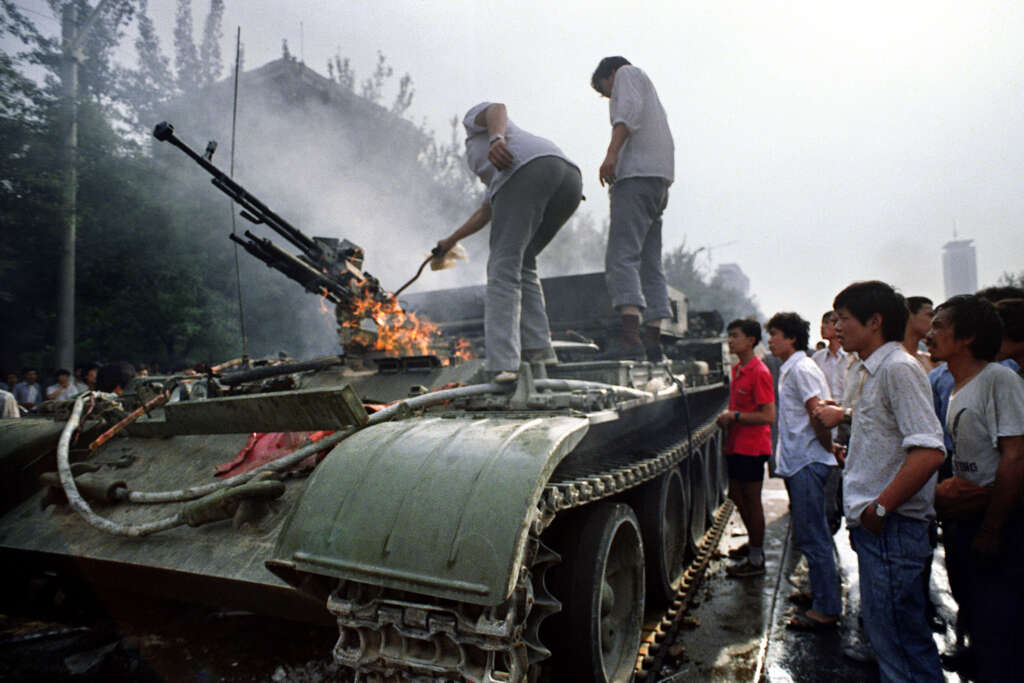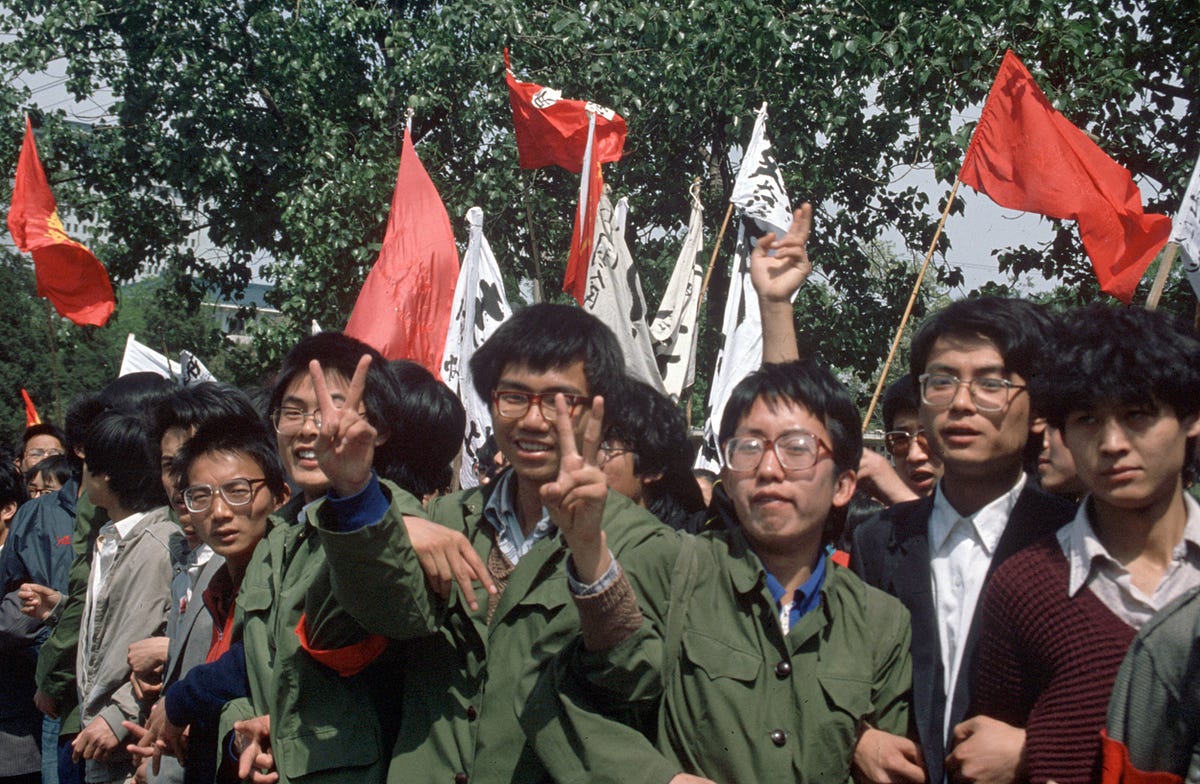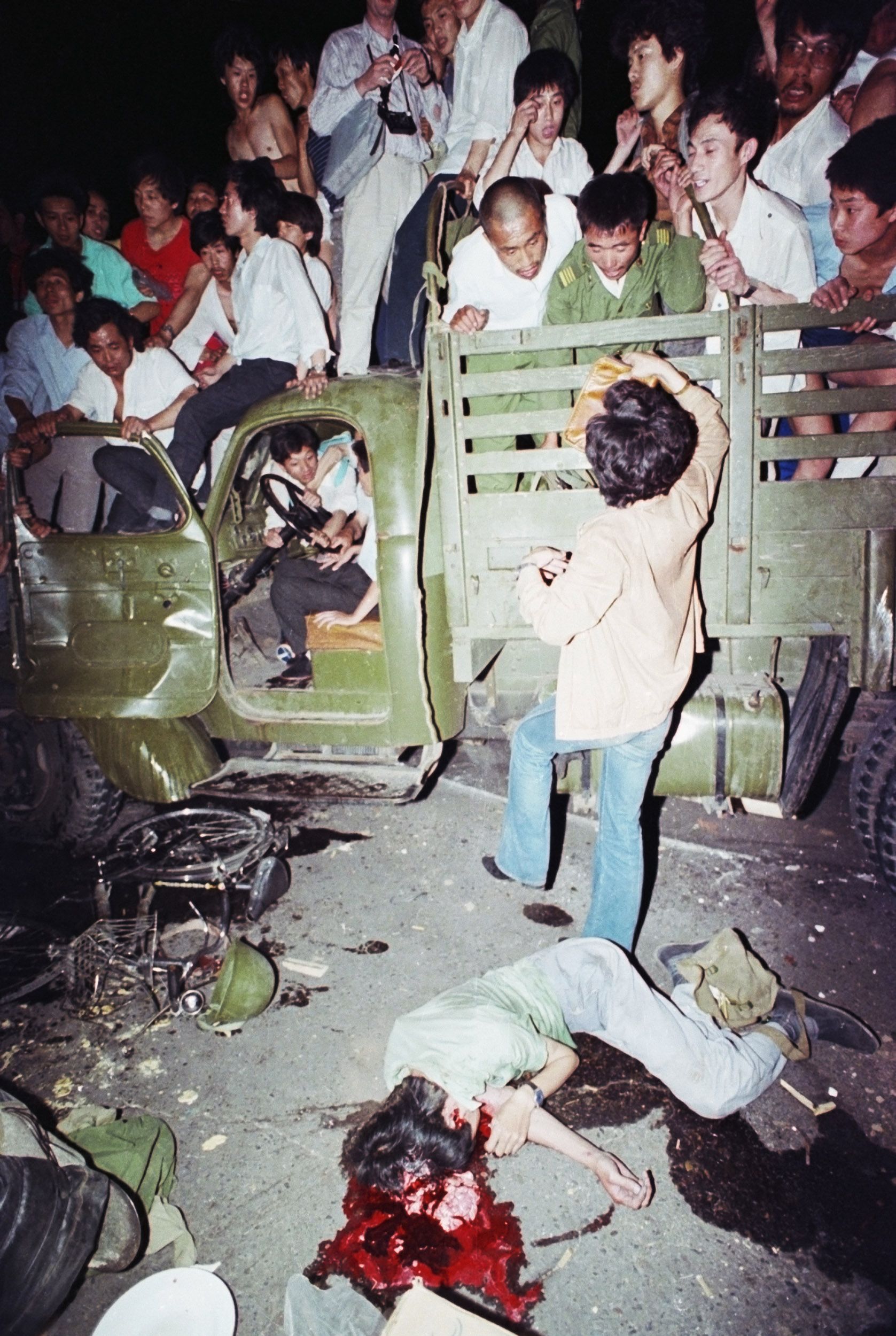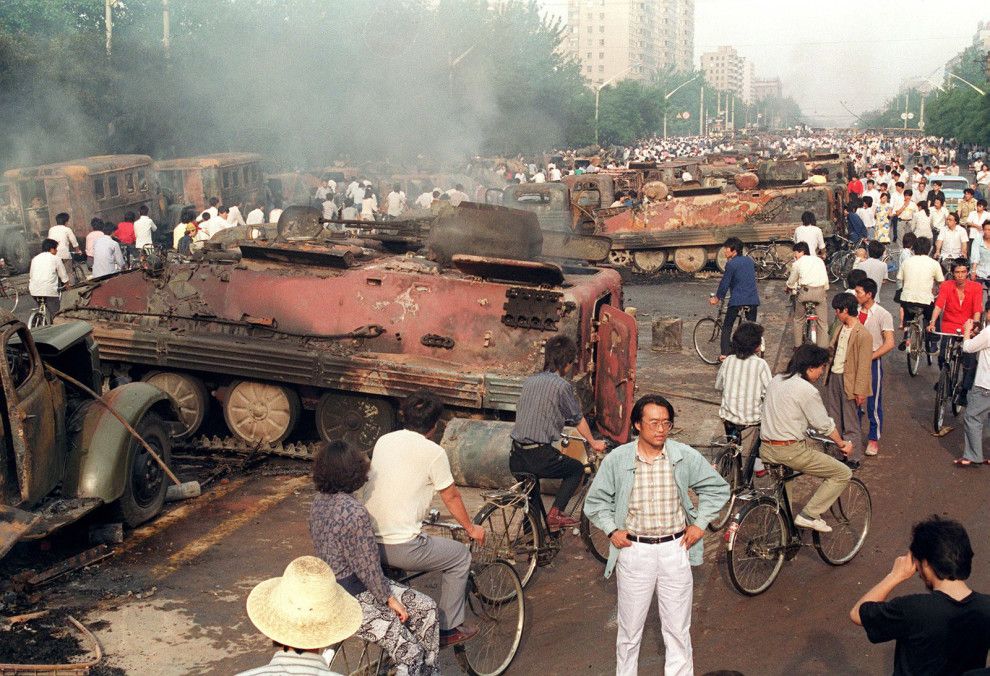
Mao Zedong, however, was deeply pessimistic about the revolutionary capacity of the working class, insisting on turning to the peasantry, with a perspective of a rural guerrilla war waged by a “Red Army”. In the aftermath, a section of the CCP leadership turned to Trotskyism and maintained its orientation to the urban proletariat. Maoism was a variant of Stalinism that emerged following the crushing defeat of the working class during the 1925-27 Chinese revolution-the direct product of Stalin’s class-collaborationist policy of subordinating the CCP to the bourgeois Kuomintang (KMT).

The Tiananmen Square massacre confirmed the Trotskyist critique of Stalinism as an agent of world imperialism. By 1989, forty years later, it functioned as a police-state instrument against the Chinese proletariat on behalf of world imperialism. The regime, which came to power in 1949 on the basis of Mao’s peasant armies, was never socialist or communist.

Wang’s comments demonstrated the open class hostility of the CCP towards the urban working class.

We’ve got to do it or the common people will rebel! Anybody who tries to overthrow the Communist Party deserves death and no burial!” On June 2, 1989, the CCP Politburo Standing Committee met with the party’s “Elders” headed by Deng and decided to clear Tiananmen Square by force.Īt the meeting, Wang Zhen, one of Mao’s peasant generals, expressed the sentiments of those present: “Those goddamn bastards! Who do they think they are, trampling on sacred ground like Tiananmen so long?! They’re really asking for it! We should send the troops right now to grab those counter-revolutionaries, Comrade Xiaoping! What’s the People’s Liberation Army for, anyway? What are the martial law troops for? They’re not supposed to just sit around and eat!. The repression was aimed not only at intimidating the Chinese masses, but at sending an unambiguous message to global investors that China’s police-state apparatus could be relied upon to regiment and contain the working class. Estimates range from 2,000 to 7,000 dead. The regime’s official death toll of just 241, including soldiers, is disputed by almost every independent study of the massacre. Fearing the eruption of new oppositional movements, Beijing ended any talk of democratic reform after 1989. A section of PLA soldiers expressed sympathy for the protestors, raising the spectre of civil war. CCP general secretary Zhao Ziyang, who supported the students and liberal intelligentsia in order to accelerate his market reform agenda, was purged and placed under house arrest. By strangling the movement in Beijing, then unleashing a countrywide crackdown, including the arrest of tens of thousands of activists, the regime survived the revolutionary crisis.Ĭonfronted by the mass protests, the regime was deeply divided. About 100 million people, encompassing virtually every higher-learning institution, half the country’s technical schools and countless factories, mines and offices in some 400 cities participated in one form or another. These opened the floodgates for a nationwide upheaval of the urban working class, which began to advance far more radical social demands. Students began their protests in Beijing in April 1989, demanding democratic reforms. Roadblocks were set up in the surrounding suburbs and pitched street battles took place between workers and the mechanised PLA. On the orders of China’s paramount leader Deng Xiaoping, the army crushed the two month-long protests by workers and students against the Stalinist Chinese Communist Party (CCP) regime.Īlthough the events of June 3-4 are generally referred to as the Tiananmen Square massacre, most of the killings occurred when 40,000 heavily-armed troops forced their way through densely-populated working class districts to reach Tiananmen Square on the evening of June 3 and the following morning. During the previous weeks, around 200,000 troops from the People’s Liberation Army (PLA) had been brought into the capital following the imposition of martial law.

Two decades ago, on June 4 1989, Beijing resembled a war zone, with trucks ablaze, rapid and continuous gunfire and tanks rolling through streets strewn with dead bodies.


 0 kommentar(er)
0 kommentar(er)
